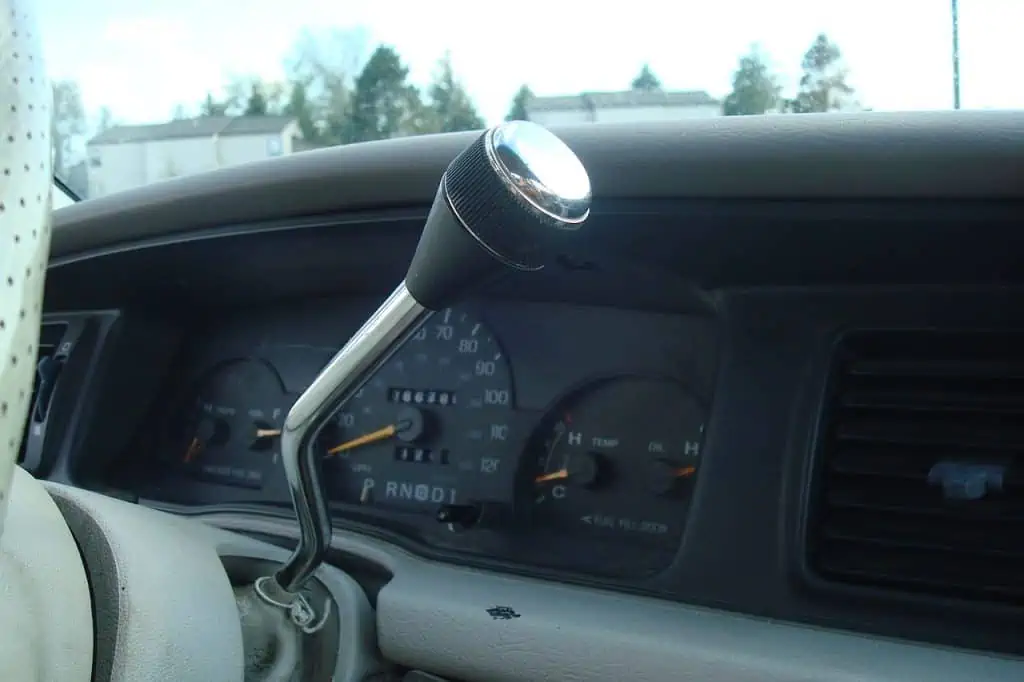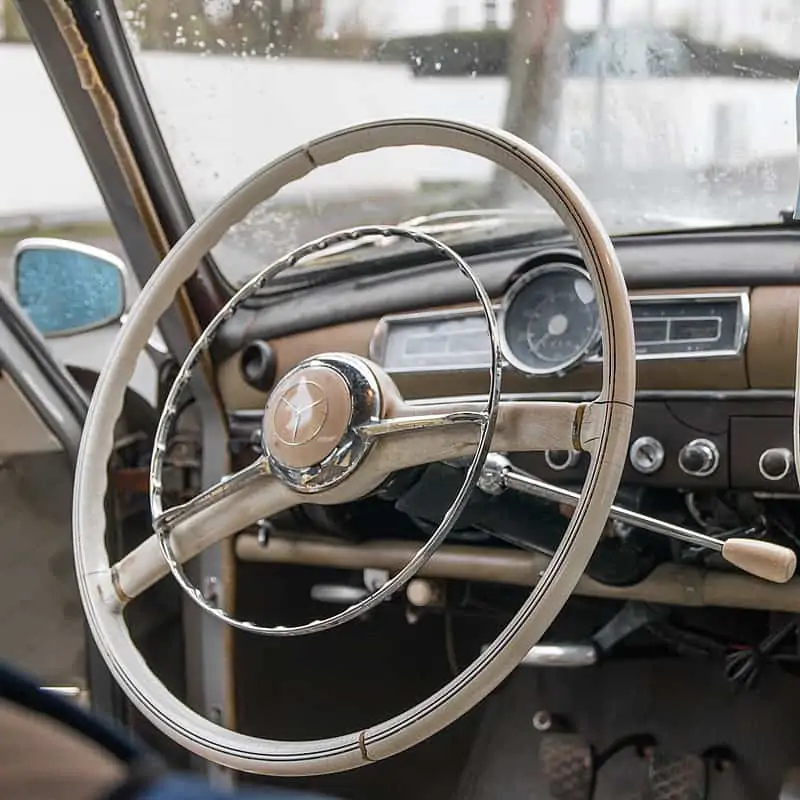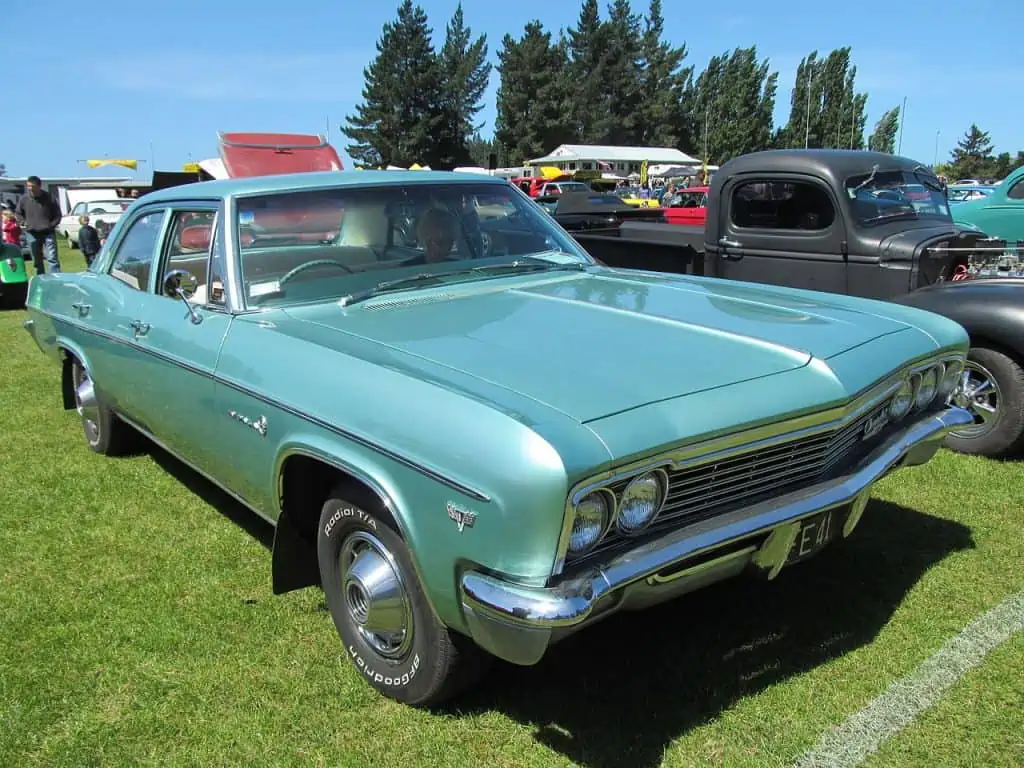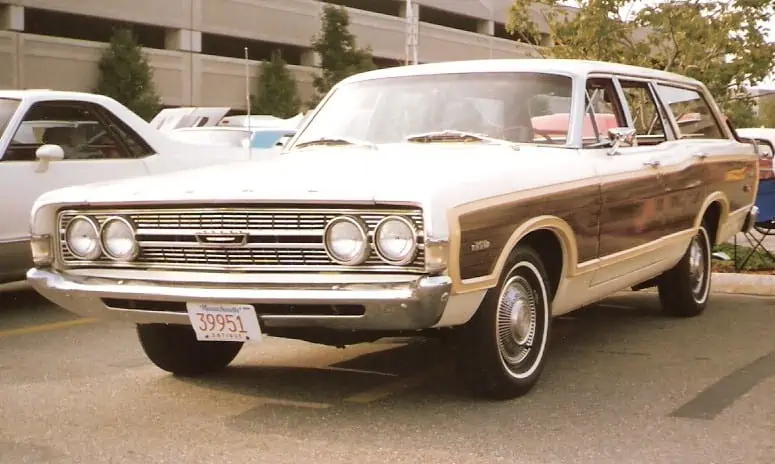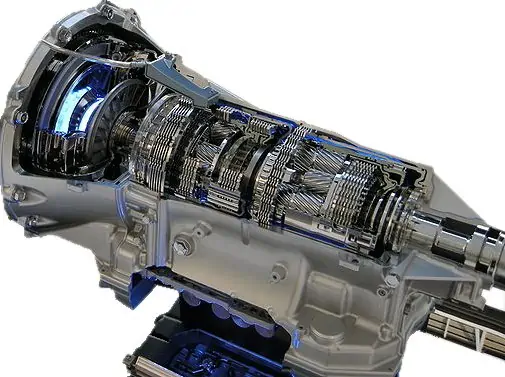If current trends continue, unless significant action is taken, the art of shifting a manual transmission will be lost to the following generation. Most manufacturers no longer provide a manual option because Americans are increasingly forgoing the ability to manually shift their cars.
It’s a sad reality, but some automakers will certainly continue to provide column shifters for at least another ten years.
The present generation of drivers has lost one important driving skill: how to shift a column-shifted manual, sometimes referred to as three-on-the-tree. This was the required specification for regional Holdens, Falcons, Valiants, and even the Leyland P76 throughout the 1960s and 1970s.
Being able to change speeds and having a six-passenger bench interior was a classic “have your cake and eat it, too” situation. On the other hand, shift linkages were more annoying than those that were on the floor.
Anyone who lived through the 1980s will remember that shift levers were positioned on the steering columns of cars and trucks. In the postwar period, the column shifter gearbox layout was the most common, but significant technical advancements in the 1970s led to its extinction.
In this article, we’ll examine the history and cultural importance of the column shifter to see if it still has a place in the modern, fast-paced vehicle industry.
A Column Shifter: What Is It?
The first column shifter was introduced to the US market in 1938. It all began with a three-speed manual shifter that let drivers manually adjust the ratios.
The 1940s and 1950s saw the widespread usage of the three-speed column shift, sometimes referred to as three-on-the-tree, in American vehicles.
Up to the late 1960s, many automobiles used three-on-the-tree column shifters with overdrive transmissions that allowed three additional ratios. A solenoid locked the planetary gear set to produce a higher gear when you pressed the accelerator pedal while moving forward in first gear.
These vehicles lacked bucket seats in favor of roomier interiors with broad benches. To provide room for additional passengers in the front, the shifter was purposefully placed on the steering column behind the wheel. Drivers with big families were drawn to this.
This arrangement has advantages and disadvantages.
Key benefits of a column shifter
- Efficacious but simple design.
- There is more room for passengers up front.
- The mechanical feedback is superb.
Drawbacks of a column shifter
- Shifters’ placement can be confusing.
- Central consoles, parking brakes, storage spaces, and other useful features are traded for extra seating capacity.
- Possibly more slowly than the shift sticks in use today.
Classic Vehicles with Column Shifters
Many cars featured three-on-the-tree column shifters with overdrive gearboxes that offered three more ratios until the late 1960s. When you depressed the accelerator pedal while moving forward in first gear, a solenoid locked the planetary gear set to provide a higher gear.
The planetary would then unlock when the gearbox was put in second gear, then lock again when the accelerator was let off. Through the third gear, this was repeated. To disengage the overdrive feature for towing, often a T handle labeled “overdrive” must be pulled out.
One issue with column shifters was that they frequently wore out, and the linkage occasionally become fouled. As a result, the shifter would not function until the hood was lifted, the driver reached the base of the steering column, and the pieces were repositioned. Some column shifters (primarily Fords) tended for the cast metal shift collar to break where the shifter entered it.
What, though do pickup trucks and vintage muscle cars have in common? Many of them were powered by manual, three-speed gearboxes. Here are a few illustrations:
The Chevy Impala SS from 1966
Few vehicles could match the cult status of the 1966 Chevrolet Impala SS. The 1966 model adopts Chevy’s “Wide Stance” design and has a wider front and rear tire, distinct body lines, and a clean hood contour.
The horizontal rear tail lamp lenses took the place of the six separate rear tail lamps that had been a standard on Impalas since 1958. To provide passengers access to the back compartment, the interior of the Strato bucket seats is folded forward.
One problem with column shifters was that the linkage occasionally got fouled, and they regularly wore out. Because of this, the shifter was inoperable until the hood was raised, the driver reached the steering column’s base, and the parts were adjusted.
The 283-cubic-inch Turbo Fire was the basic V-8 engine, and it had a fully synchronized three-speed manual gearbox with a column shifter. It generated 195 BHP at 4800 RPM.
The V-6 or V-8 engines and manual or automatic gears offered in Chevy’s Super Sports models were built for performance.
In 1966, the Impala sold 38,000 vehicles, making it the second-best-selling sedan in the country thanks to its 7.0-liter V8 engine.
The Torino GT from 1968
The Ford Torino GT, a more opulent Fairlane alternative, was unveiled in 1968. With lower body moldings and a fastback roofline that dipped to the edge of the trunk lid, this two-door muscle vehicle was based on a 500XL GTA that had undergone a makeover.
The fresh appearance performed well on the racecourse. Ford at once had a stunning midsize vehicle that might rival the Pontiac GTO. In addition to the standard three-speed column-shift manual transmission, the GT had alternative V-8 engines, high-end wheel covers, and additional illumination in the door panels.
265 horsepower and 390 pound-feet of torque were generated by the FE-series engine. With over 500,000 units sold in its first year, the Torino dominated the market. By the end of 1972, Torino was the intermediate with the highest sales in its market.
The Ford Falcon XF
Despite the Falcon’s numerous American firsts, it was a philistine in certain aspects, keeping its column manual, umbrella handbrake, and leaf springs long after Holden had done away with them. This gave the Falcon its unique character.
The Borg-Warner three-speed column shifter was offered until 1993, the year that the XF Falcon Ute and Panel Van was discontinued. These days, finding one is difficult, but if you do, take it.
The Ford F100 from 1986
America’s backbone is made up primarily of large, heavy pickup trucks, and this trend is continuing. The modern F150 is a far cry from the useful classics, sporting an aluminum body, color displays, and a ton of chrome.
In the 1980s, a 4.9-liter straight-six and a three-on-the-tree Borgy were both offered for the F-Series. When the new generation was introduced without a choice, it happened last in 1986. A year or two prior, Dodge and Chevrolet had discontinued the option.
W124 E-Class Taxi by Mercedes-Benz
No new Mercedes-Benz passenger car has a clutch pedal, in contrast to arch-rival BMW, which still offers manual gearboxes as a special order option on its autos. This is why finding that a column-shift manual for the W124 E-Class was offered from 1984 to 1996 is such a strange piece of knowledge.
This was because due to their robust design, Mercedes-Benz vehicles were commonly used as taxis throughout continental Europe. Option ‘626’ offered a four-speed column-shift manual transmission with a shifter fashioned like a dog biscuit (a variant for Finland).
With the previous two S-Classes having a little tab for the (auto) gear selection, the column-shifted Benz is back. Why this was only accessible in Finland is unknown.
1966 Chevrolet Impala SS with a column shifter by Riley / CC BY 2.0. The standard V-8 engine was the 283-cubic-inch Turbo Fire, which included a completely synchronized three-speed manual transmission with a column shifter. At 4800 RPM, it generated 195 BHP. Chevy’s Super Sports models include V-6 or V-8 engines with manual or automatic gearboxes that are built for performance.
The Toyota Hiace
The second-generation Hiace, equipped with a practical column-shifter for the five-speed manual gearbox, was produced in 1995 in various countries.
In Australia, several of these Hiace vehicles are in good operating condition; typically, they are used as camper vans or backpacker transports. Hiaces is followed by a floor change, which causes some awkward physical contact for bench seaters.
Taxis In Japan: Nisan Cedric and Toyota Crown
Japanese taxis are mostly Toyota Crown Comfort or Nissan Cedrics with LPG-powered 2.0-liter engines. They are quiet, unobtrusive cars.
Up until 1999, both of these large sedans could be had with column-shift four-speed manual gearboxes, but it wasn’t exactly a luxurious experience. The Comfort, probably the same vehicle but with a four-speed floor automatic gearbox, is still on the market.
The Fiat Ducato
The original 1981 Ducato, which wasn’t offered in the US, was badge-engineered to look like various Peugeot, Citroen, and even Alfa Romeo models.
Up until 1993, a column-shift manual transmission was an option; however, the next model introduced a standard gear lever on the dashboard to take its place.
The Peugeot 504
The durable Peugeot 504, designed by Pininfarina, was produced for three decades in Australia, up until the early 1980s, while Nigerian manufacturing continued until 2006.
Before it fell out of vogue in the 1990s, this was a classic Peugeot with a smooth ride and durability that solidified its reputation. Another option was a stunning column-shift manual, which was claimed to be a tactile treat to use.
The Citroen 2CV
France’s people vehicle, the tin snail, features a unique shifter system that is located on the dash. The ball is attached to a telescopic rod that moves in an unorthodox manner, near the steering column.
The Saab 96
Though it is no longer with us, the quirky Swedish carmaker SAAB will always be remembered. The 96 was one of the final European vehicles with a column-shift manual transmission and the brand’s final two-stroke vehicle.
The Trabant
The Trabant 601 was the only form of transportation available to the proletariat before the 1989 collapse of communist East Germany’s iron wall. It was a front-drive, two-stroke car made of the recycled cotton composite Duroplast.
Its four-speed gearbox also included an innovative column-shift arrangement that involved adjusting an umbrella-shaped rod at odd angles. The vehicle was built until 1991 when West Germany’s more contemporary cars started to take off.
The Torino GT from 1968 with a column shifter by Josephew / CC BY-SA 3.0. The youthful appearance did well on the racetrack. Ford immediately had a magnificent midsize car that could compete with the Pontiac GTO. The GT included additional lighting in the door panels, different V-8 engines, and high-end wheel coverings in addition to the normal three-speed column-shifter manual transmission.
Why Don’t Car Makers Use Column Shifters Anymore?
Several factors contributed to the demise of the three-speed manual transmission with gearshift lever positioned on the column among both consumers and automakers.
1. A Change In Priorities and Client Preferences
A change in customer views was shown by the introduction of console and floor shifters. Customers shifted from bench seats to bucket seats as safety concerns increased.
The vehicle’s center console, which was positioned in the middle seat, had the gearshift, storage spaces, and infotainment systems.
There was plenty of space available once the column shifter was taken out for equipment like cruise control, intermittent wipers, fog lights, and shift paddles.
2. Complexities When Downshifting
The column shifter’s location might be uncomfortable for certain persons. Downshifting requires a great degree of accuracy. In situations when you need to swap gears rapidly, such as in an emergency, this can affect your timing.
3. Transmissions with Push Buttons
As push-button devices became more prevalent in the 20th century, automakers explored the notion of electronically controlled gears in passenger cars. This thought experiment, originally employed in the Vulcan System in 1914, allowed drivers to change gears with the touch of a button.
The technology was still being developed by automakers even though it was far from optimal. The Chrysler Corporation’s version, which debuted in 1956, was dubbed The Magic Touch. Push-button technology was developed further by Ford’s Mercury division with its Keyboard Control.
This craze didn’t last very long because consumers preferred the reliable control of a traditional selector to the potential of electronically controlled transmissions.
4. Automatics Have Become More Affordable and Useful
The three-on-the-tree method was abandoned in the 1960s and 1970s with the advent of affordable automated vehicles.
Even though four-speed manual and automatic gearboxes were undeniably popular, three-speed column-shift cars continued to be manufactured far into the 1980s.
The faster and less fuel-efficient manual transmissions are outperformed by the eight or ten speeds found in many modern automatic gearboxes. The fact that automated gearboxes outsell manual transmissions in the US is not surprising.
Only 41 of the 327 new car models manufactured in the US in 2020 will feature manual transmissions, according to Edmunds. Nissan announced the discontinuation of stick shifts on the Frontier in the same year.
How to Convert a Column Shift to an Automatic Floor Shift
Your car’s steering column contains a column shifter, often on the right side. Making the switch from a column shifter to a floor shifter in your modified vehicle just requires a few lever adjustments.
A commercial push-button-based electronic shift selector by Comyu / CC BY-SA 3.0. In the 20th century, as push-button gadgets proliferated, automakers investigated the possibility of having passenger cars’ gears be electronically operated. This hypothetical system, first used in the Vulcan System in 1914, let drivers shift gears by pressing a button.
Depending on your degree of tool and mechanical skill, you may replace your column shifter with a floor shifter in less than eight hours. However, even a novice DIYer with little to no expertise may do this project.
Step 1
Using a flathead screwdriver, remove the center cap from the steering wheel. Utilizing a 9/16-inch socket and ratchet, loosen the central nut. Use a steering wheel puller, which is available at most auto parts stores, to remove the steering wheel from the column shaft. Attach the puller, according to the instructions on the puller’s packaging.
Step 2
Use needle nose pliers to unclip the shaft. The gear sleeve cannot be removed because of the clip, which slips into a groove in the shaft. A sleeve cap, which lacks a gear slot, should be used in place of the gear sleeve.
The shaft clip should be repositioned over the shaft. After replacing the steering wheel, tighten the center bolt and swap out the center cap. Replace the steering wheel.
Step 3
Under the vehicle, where it connects to the transmission, locate the shifter linkage. With needle tip pliers, remove the carter pins from the linkage and then take the linkage away from the transmission.
Step 4
Drill a 1/2-inch hole in the floor hump that is directly above the transmission linkage position. Place the floor shifter template there, lining up the center with the hole that has already been drilled. Use a Sharpie marker to outline the template’s outside border.
Step 5
To hold the new floor shifter in place, insert it into the floor and fasten it with the 1/2-inch metal screws. To conceal the shifter components underneath, slide the rubber boot over the shifter.
Step 6
Connect the linkage shaft on the transmission to the floor shifter linkage below the vehicle. Using needle nose pliers, move the linkage pins through the shaft holes. To keep dirt from getting into the linkage’s components, spray white grease on the linkage.
Step 7
As you would your column shifter, use the new floor shifter. The reverse is second from the top, neutral is third, the drive is fourth, and so on. “Park” is located at the front.
A Loose Column Shifter: How to Repair It
The gear shifter is one of the most crucial parts of a vehicle. As the name suggests, this will let you change from one gear to another. Therefore, if it is destroyed, your safety can be in danger.
You’ll struggle to control how your car moves. That so, any issue should be resolved as quickly as possible to stop it from getting worse.
The column shifter frequently has problems, one of which is that it is loose. This happens frequently, especially if your car is older. Overuse and movement cause the column shifter to loosen over time. The majority of the time, tightening the bolts will take care of the issue.
Automatic transmission by Silverxxx / CC BY-SA 3.0. With the introduction of reasonably priced automated cars in the 1960s and 1970s, the three-on-the-tree approach was abandoned. Despite the undeniable popularity of four-speed manual and automatic gears, three-speed column-shift vehicles were still produced well into the 1980s.
Continue reading if you want advice on how to fix a loose column shifter. Additionally, we’ll provide you with some advice on how to maintain your column shifter’s optimal performance so that you may drive with confidence.
What You’ll Require
Make sure you have the following supplies on hand before you begin:
- A torque screwdriver
- A thread locker
How to Fix a Loose Column Shifter: Step-By-Step Instructions
The simple procedures to fix a loose column shifter are listed below.
1. Identify the Cause of the Column Shifting Issue
At this point, you are already aware that the column shifter is loose. It can even make an odd noise and is no longer as responsive to your controls.
Even though you may be aware of the problem, you do not understand its cause. Finding the issue’s root is the first step, after which you can come up with a plan for fixing it.
The hood must first be opened. Have someone adjust the column shifter for you while you watch the engine to make things simpler. Search for the moving part. Continue to the next area to inspect if everything seems to be in working order and if there don’t seem to be any loose parts.
Look at the space under the steering wheel. This is usually the source of the problem. No components need to be taken out. All that’s left to do is inspect to confirm that this is the problem’s origin.
Your hand should land on the steering column as you locate and depress the brake pedal. As you turn the steering wheel, you can see how this section moves.
Examine the components, especially the bolts, that come into contact with the gear lever. They are probably scattered all over. If they are, you know you’ve identified the source of the issue, and all you need to do to fix it quickly and painlessly is to tighten it.
2. Take Out the Bolts
If they’re slack and jiggling, all you have to do is take out the bolts holding them in place. For this, you’ll need a torque screwdriver, the size of which will depend on the vehicle. After removing each bolt individually, proceed to the subsequent step to align them.
3. Insert a Thread Locker
Once the bolts have been removed, apply the thread locker. This will keep the bolt tight and secure despite any vibrations that may happen. If this is not done, the bolts will come loose once more.
4. Restore the Bolts
After installing the bolt, tighten it. Tighten it up using the torque screwdriver. Test the column shifter; at this point, it should no longer be unstable. Ensure the bolts are securely fastened to prevent any further wiggle.
Peugeot 504 Limousine with a column shifter by Joost J. Bakker / CC BY 2.0. Australia produced the Peugeot 504 from the early 1980s for three decades, while Nigeria produced them until 2006. This was a classic Peugeot with a comfortable ride and durability that cemented its name before it went out of style in the 1990s. A magnificent column-shifter manual was another choice; it was touted as being a tactile delight to operate.
Pro Tips Regarding Column Shifter: The Key Factors to Remember
- Be cautious when changing gears. Most of us are undoubtedly guilty of moving too firmly and appearing upset all the time. You run the risk of having a sloppy column shifter if you do this often.
- Don’t ignore the problem when it initially arises. Acting becomes looser the longer you wait. In the worst instance, this might jeopardize the performance and safety of your car.
- Bolts shouldn’t be overtightened. Ensure that it is firmly attached to prevent wobbling. On the other side, if it’s too tight, it won’t move, making it more challenging to change gears.
- Spray some oil or lubrication on the bolt to make it simpler to spin if it’s too tight and preventing you from removing it.
- Sometimes only tightening the bolt is insufficient. This is especially true if the problem has become more serious. The column shifter itself might be the problem. In this case, you might need to buy a new column shifter. It is best to obtain expert assistance because installation might be challenging.
- In rare cases, you might also need to swap out the shift tube. The tube may crack or shatter due to the low quality of the materials used. It’s possible that some materials can’t withstand constant exposure to the weather. Verify that the shifter’s other parts, including the tube, are in excellent operating condition.
The Conclusion
Vehicles with manual gearboxes required a column shifter during the early to the mid-20th century. As transmission technology developed, the original shifter was relegated to obscurity.
Although the majority of drivers disagree, there is a small but devoted fan club of drivers that love the three-on-the-tree layout online.
A ten-speed column-shift car is not expected to be produced any time soon because fewer vehicles with manual transmissions are being produced these days. With the introduction of engineless electric vehicles, the demise of the column shifter seems inevitable.


Jim Wicks is the founder of MotorVehicleHQ. With over two decades of experience in the automotive industry and a degree in Automotive Technology, Jim is a certified car expert who has worked in various roles ranging from a mechanic, car dealership manager, to a racing car driver. He has owned more than 20 cars over the past 15 years. Ask him about any vehicle you see on the road and he can tell you the make, model and year. He loves the aesthetics of all things cars, and keeps his vehicles in pristine condition.
In his free time, Jim enjoys getting his hands dirty under the hood of a classic car or taking long drives along the country roads. His favorite car? A 1967 Shelby GT500, a true classic that, according to Jim, “represents the pure essence of American muscle.”
